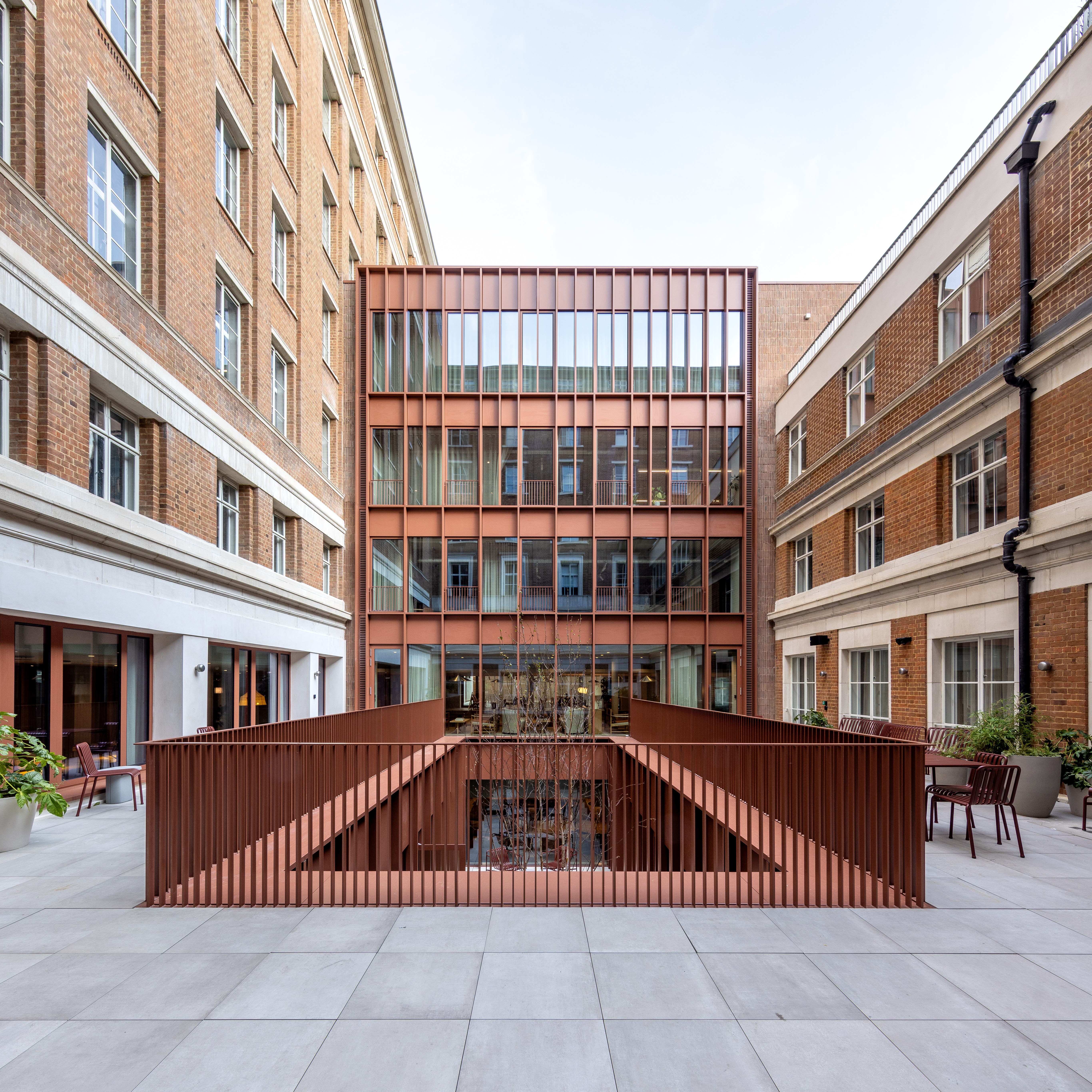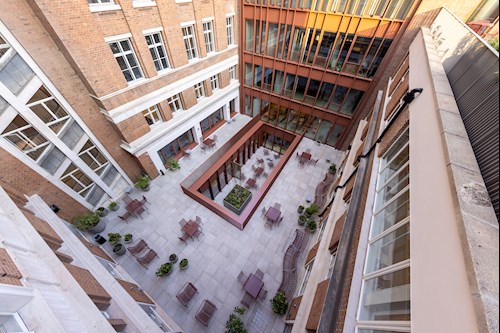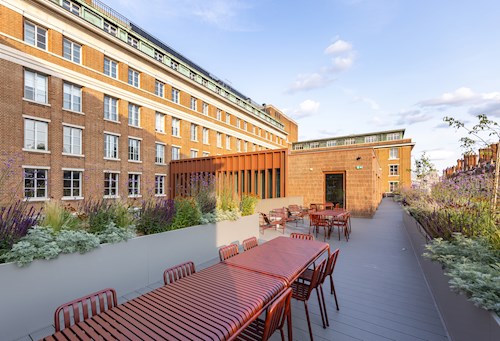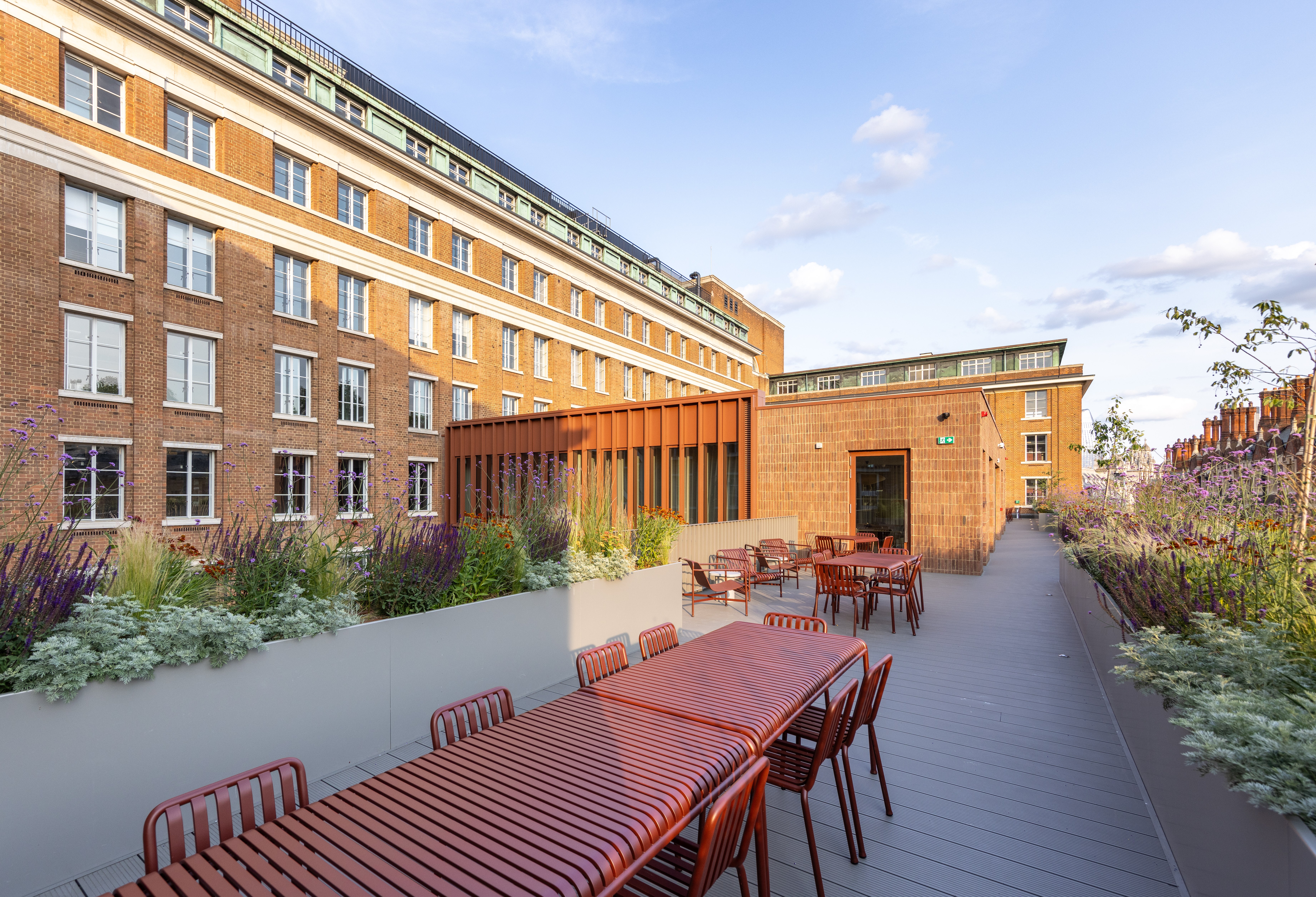26 June 2023
Collins has completed the refurbishment and fit out of Chancery House on behalf of our client, The Office Group. The Collins team and its partners, Opera, dMFK, Castle Hayes Pursey, Heyne Tillett Steel, Environmental Engineering Partnership and MLM, have delivered 165,000 sq. of works to transform an historic but worn building into a vibrant, sophisticated and high-quality, flexible working space.
The scheme, Collins’ largest to date, has exemplified complex structural works combined with high-quality fit out.

The team carried out extensive structural works to extend the internal atrium from the ground to third floor, increasing the office floor area by 4,000 sq. ft, and creating a new roof and external curtain wall façade. The ground floor lightwells have been opened-up to create lower ground level courtyards and a new third floor roof terrace now offers outside space as part of the refurbishment.
With the London Silver Vaults, the world’s largest retail selection of antique and contemporary silver, occupying the basement levels of the building, an important deliverable of the tender brief was for our team to develop a scheme which allowed the extensive alterations to complete successfully whilst maintaining the integrity of the vaults and its day-to-day trading, access and security.
The team developed an in-depth phasing and logistics plan to facilitate the extensive steelwork that needed to be brought to site and lifted over the building, whilst causing minimal disruption to surrounding neighbours and commercial premises. This was further complimented by a series of complex temporary sequences to ensure the stability of the existing 1950s building throughout the alterations process.

Additional challenges for the team included:
- Installing large format tiling throughout spatially constrained locations - Instead of cutting and manoeuvring the oversized tiles to install within a constrained space, the team critiqued an approach which allowed installation of the full tile throughout the entire area. Careful consideration was given to ensure tile joints were set out to suit partition arrangements and once in place, partitions where set out and affixed upon the finished tiling.
- Floor to ceiling height spatial constraints on lower ground floor – The team omitted raised access flooring where possible, re-specified finishes, re-coordinated high level services arrangements and formed various penetrations through structural components to allow increased height raised service routes and overall head height throughout the lower ground floor spaces.
- Critical commissioning of mains ventilation systems ahead of completing landscaped areas containing fresh air intake ducts – The team developed a series of designed scaffold solutions to encapsulate ventilation intake locations to protect from general contamination. This allowed critical commissioning to progress alongside the completion of our landscaping works.
- Management of lower ground floor drainage routes to allow connections to existing systems – The team undertook extensive investigations to ensure compliant falls could be achieved whilst avoiding new low-level structural beams supporting courtyard planters and gym weights area. This was further strained by the need to navigate varying floor void build-ups and the inability to introduce new connection chambers due to the close proximity over the London Silver Vaults.
- Roof plant pipework and services spatial coordination – The team needed to re-work and lay out the plant and services more efficiently within a confined spatial environment as well as keep the access routes clear for maintenance. A new plant room space was introduced to facilitate this, and to split the pipework between risers on either side of the building. With the main plant located in the central roof space, pipework had to be configured at high level and via perimeter routes with additional builderswork formed ahead of this. Planning constraints on height had to be considered as well, with the pipework kept as low as possible outside the roof plant zone with no crossovers present. Whilst the routes were longer, the final installation delivered on all fronts.













